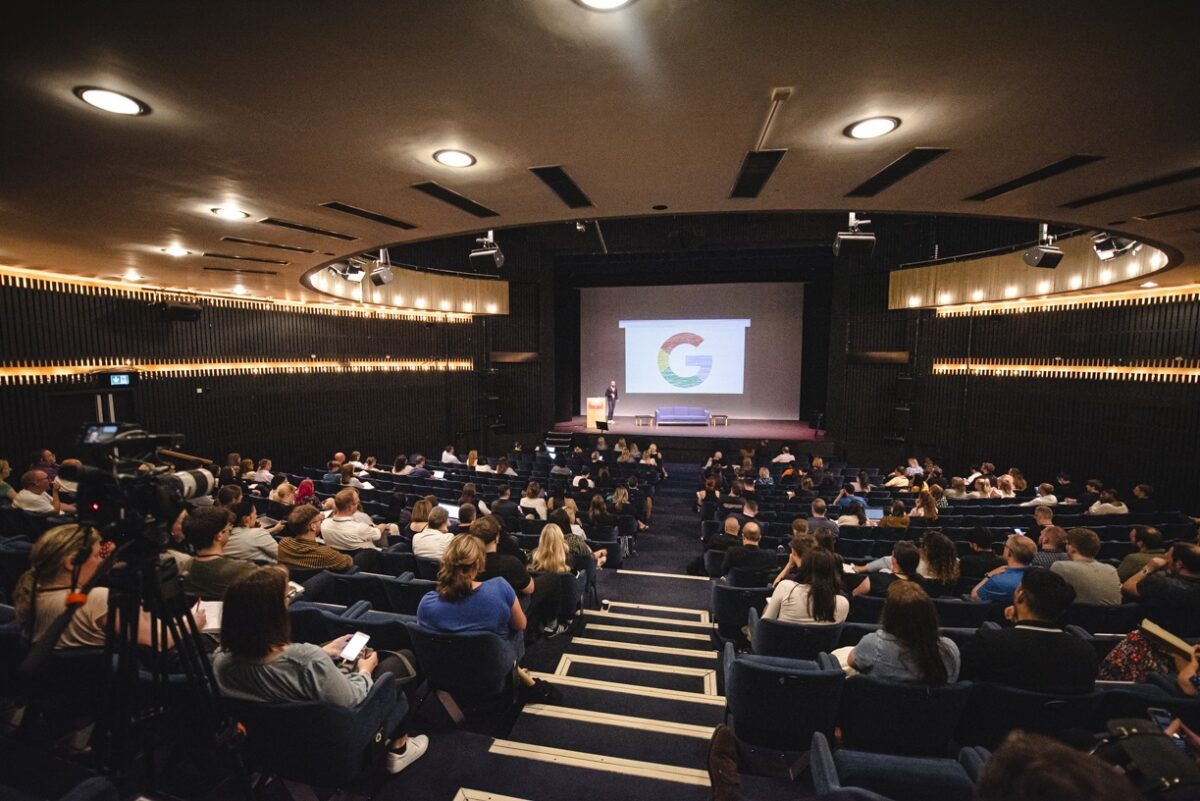We had an absolute blast at the Digital Summit last week and we hope you did too! Witnessing the day unfold and seeing everything come together was incredibly rewarding for all of our team, making the weeks of blood, sweat and tears (quite literally!) that went into organising the event finally feel worth it.
A massive kudos must be given to all of our talented speakers who generously donated their time to inspire and educate fellow members of the digital marketing community, while synchronously supporting asylum seekers and refugees by raising over £15,000 for our charity of the year, the Nottingham and Nottinghamshire Refugee Forum.
For those who unfortunately could not attend – or those wishing for a way to permanently access the exclusive insights that were revealed – we’ve summed up a few key takeaways from those who presented on the Nottingham Playhouse’s main stage last Friday.
Navigating the ‘messy middle’ of the digital consumer
Our first main stage talk was from Adam Hetherington at Google who explored the digital consumer through consumer simulation. Through this simulation, he explained how he managed to convince 45% of UK consumers to switch to an alternative brand from their favourite, by supercharging copy, highlighting the impressive powers of digital marketing.
The three main takeaways from Adam’s talk included:
- Ensure brand presence
- Intelligently (and responsibly) employ behavioural science principles
- Close the gap between trigger purchase.
NLPs and human languages: how Google’s new updates affect context and content
Carmen Dominiguez and Cecilia Toro from The Hut Group began their talk discussing the different ways in which humans semantically analyse words, the four key stages being: grammatical, lexical, syntactic and semantic.
They further discussed that NLP (Natural Language Processing) provides computers the ability to understand language in the same way as humans, complicating the user journey and making each journey unique. With technological advancements, an increased emphasis must be placed on the identification of intent behind web pages and of future users in order to ensure the outcome of each user journey remains successful.
High performance SEO: blueprints for success
Grabbing our attention instantly, Steve Paine from SISTRIX began his talk with a slightly sobering statistic – that only 3% of content campaigns ACTUALLY work. Eager to know how to be in that 3%, Steve had us all on the edge of our seats as he kindly shared his key points on how to make a website successful in search.
Steve advocated for creating high performance content formats and silos pages that are technically well-optimised and offer great user interface and experience. He maintained that, once the right balance is deduced, these elements can then become scalable.
How to make your website your best performing sales channel
Jan Barthelemy, VP Global Sales at Leadoo, covered plenty of ground concerning how to enable your website to convert more.
Presenting more challenging facts at this year’s Summit, Jan explained much of the reality behind driving conversion, stating that 96% of first-time website visitors are not ready to buy, so simply making your ‘book a demo’ button bigger is not the solution.
Jan suggested that websites should be made with the aim to deliver real human interactions. Users will remain engaged and feel they can ask questions, simulating a much more real life conversation, prohibiting users from wanting to walk out and leave quite so easily. A humanistic approach will keep visitors on your site for longer and help to drive more sales.
How to grow international: targeting customers, not places
We were lucky enough to have welcomed not 1, but 2, speakers from Google onto the main stage. Our second Google speaker, Liam Higgins, explored international growth during a time of significant instability. With the recovering global economy facing ongoing challenges such as geo-political instability, supply chain disruption and inflation surge, there is likely to be a profound impact on customer purchasing powers.
Liam went on to say: “This will have a negative impact on consumer confidence. Consumers are going to become more precious about where they look to buy”.
However, the final takeaway adopted a much more positive note. Liam expressed that the “future of international is about customers, not geography”, therefore early movers can thrive in fast-growing markets and sectors by considering digitalisation, diversification and profitability.
Building a connected community in a hybrid world: why brand voice is more vital than ever before
Krisi Smith opened her talk discussing Bird and Blend Tea’s mission statement: “To prove you can build a successful business that bases its decisions on people and planet, as well as profit.”
A mission statement that encompasses an ideal world of business, that most would aspire to but perhaps not deem possible, Krisi – who built her brand via her Nottingham bedroom – proves that incorporating all these elements is not just possible, but essential to success.
Krisi revealed: “At the time we started we didn’t have any money, so we were going to market stalls, chatting to people. We didn’t realise at the time but we were gathering market research – we were learning how to put people at the heart of our foundations.”
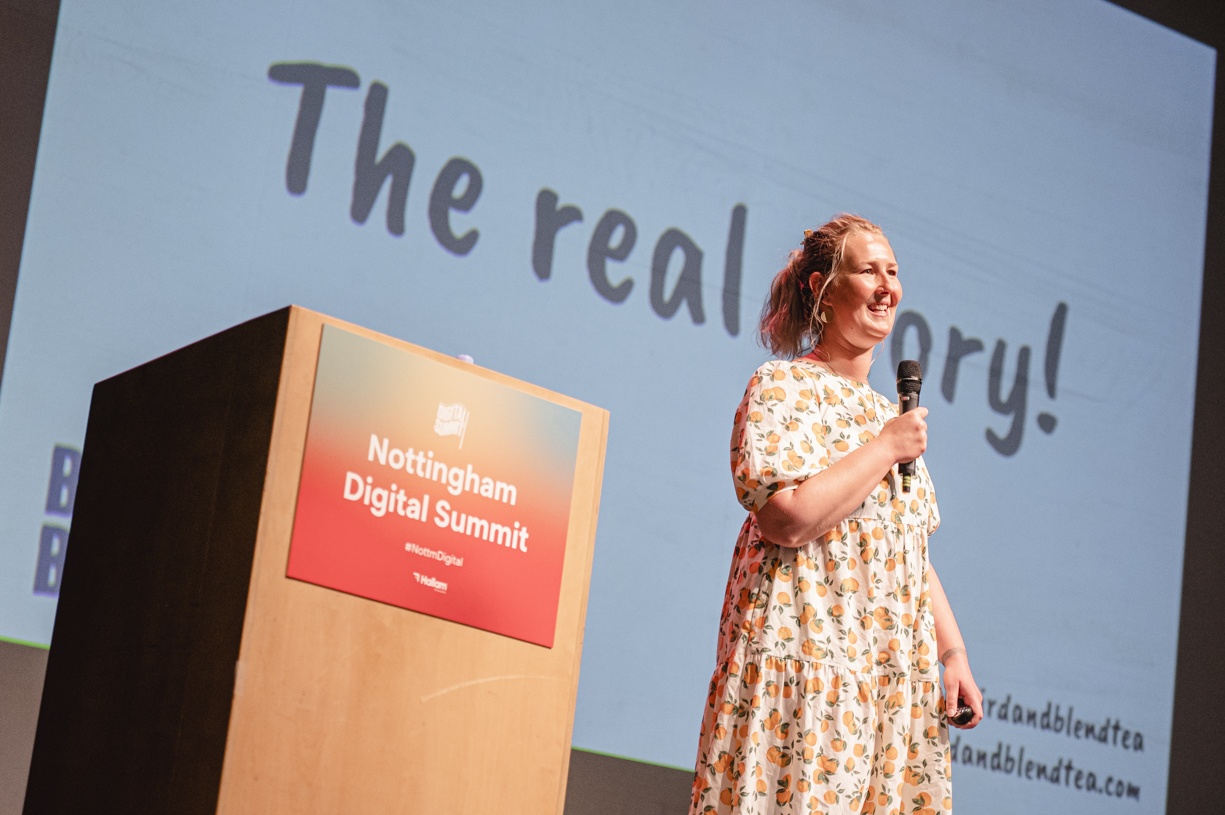
Our main takeaway from Krisi’s talk was that placing people at the forefront of every business decision by considering how we want to make them feel and how we can impact their lives, does indeed act as a key driver of success
Content marketing: the top trends for 2022 and beyond
Dr Dave Chaffey, founder of Smart Insights, lived up to his brand name and did indeed provide some incredibly insightful advice on content marketing. He started by recommending comparing your existing content to that of your competitor, providing a substantial place to begin finding gaps in the market.
Once gaps are discovered, you should aim to produce high quality content across all website pages and reinforce the links between these pages and, once content is in the right format, it should be distributed according to the 70:20:10 rule for media placements:
- 70% proven content that works effectively and drives leads
- 20% should be spent making content that is less effective, better
- 10% for investing in new media formats
Ensure to cover all types of multimedia (e.g. text, image & video), remembering to engage with humans and not machines. Dave explained: “If you can put the right form of interactive content on the website, it can be more effective than sending out an email.”
The value of values: how to leverage marketing to feature in tomorrow’s nostalgia
Company values were the focus point of Duarte Garrido’s talk. As Group Head of Social Media at Coca Cola HBC, Duarte posed the idea that to appeal to Gen Z – the new generation of consumers – companies must pivot old tactics and encourage an increasing amount of self-awareness across the company.
Duarte questioned: “Is mimicking the values of your workforce enough? Is it enough for a company to remain relevant?”
Our key takeaway is that self-awareness creates an increased focus on values and justifying everything we do as a business. This is exceptionally important for future success, as Duarte argued: “This new generation acts on their values through money – how they earn it and how they spend it. They will choose to buy a product based on that company’s values.”
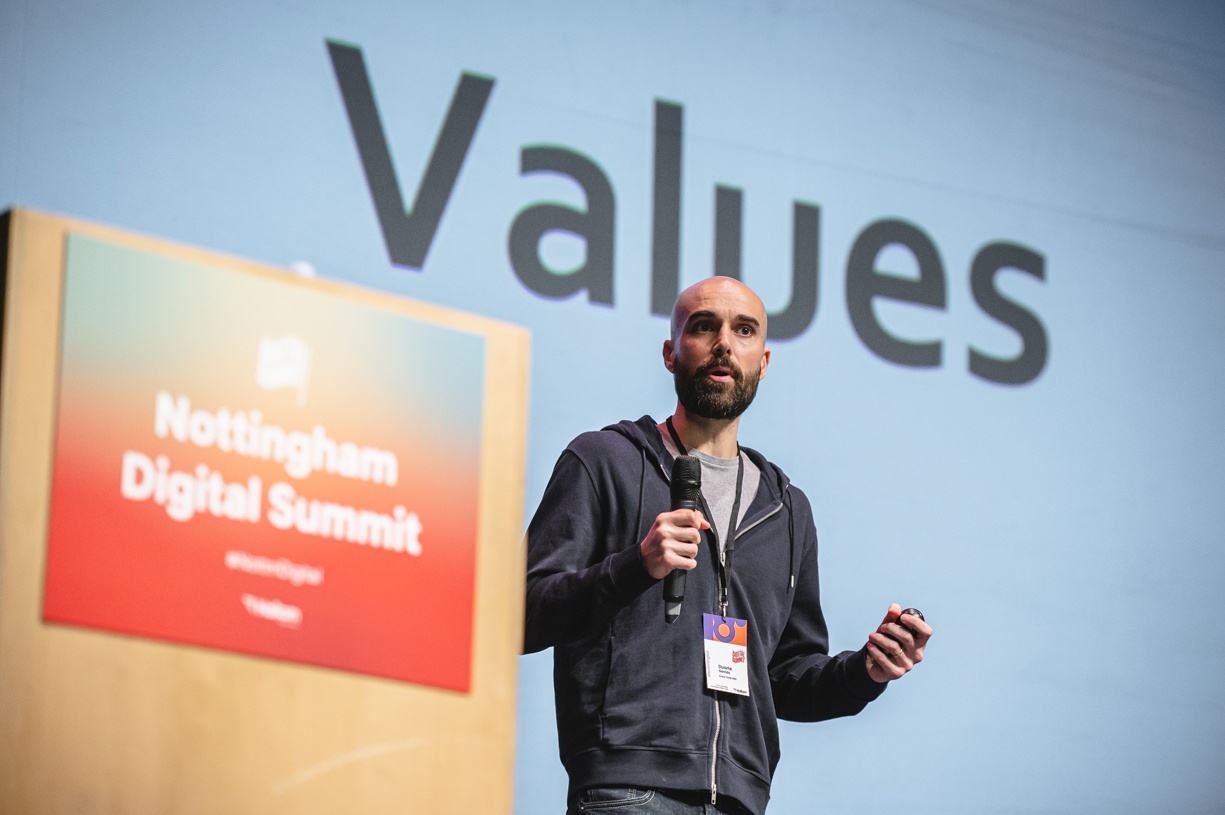
Personalised digital marketing: a return to individualised consumer engagement in the age of Big Data
Taking an academia-based stance to the marketing world, Dr Naomi Muggleton joined us from the University of Oxford to discuss her research on how to harness the digital traces left behind after engaging with technology, to best understand consumer personality and decision making. Increasing digitisation and automation has left customers feeling isolated from companies and had an inverse effect on brand loyalty and satisfaction when data is not harnessed to its full potential.
Naomi emphasised that in a time in which we have more consumer data than ever before, it is crucial we efficiently manipulate this data to personalise the consumer journey where possible, rather than relying on smart tools like automation that do the job for us. Although advancements in technology provide ease to marketers, we must not forget that individual human beings are key to every successful business and therefore, we must place emphasis on reaching our consumers in a personal and human way.
Using search data to power your marketing strategy
Our very own Charlotte Tomlinson tackled how to use search data to power an overall marketing strategy. Proving that Search data isn’t just for SEO experts, Charlotte’s opening message instantly made us reflect upon how much importance we are placing on our search data and how effectively we are managing it: “All of the questions posed by your customers every day are a goldmine. You just need to know how to utilise that search data effectively.”
The three key takeaways from Charlotte’s talk included:
- Search data allows us to connect the dots between high level marketing strategy and tactical work
- It can help you understand your customer’s pain points and identify online competitors
- Knowing what’s popular with your target customer allows you to position yourself for growth
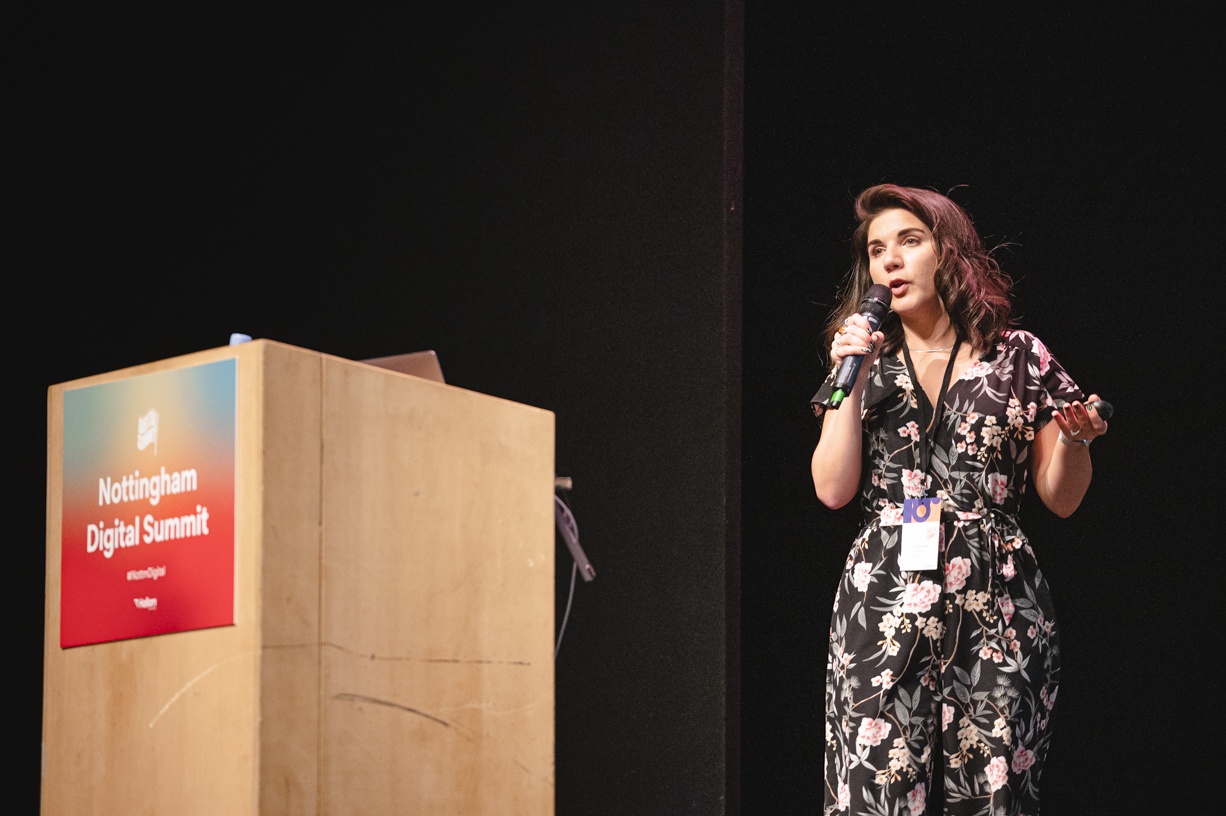
How to grow in the attention economy
Hallam’s CEO, Julio Taylor, perfectly encapsulated the problem of the attention economy: “If everything is a neon sign, nothing is a neon sign. How do you win against that backdrop?”
Julio went on to explain the importance of meaningful content rather than quantity of content and the ability of this content to reach our target users.
The crucial points of his talk were:
- The human attention span is the world’s most precious resource
- The privacy tipping point will amplify the value of human attention
- To win in the attention economy, maximise the power of human attention
The intersections of marketing: a fireside chat with Susan Hallam MBE and guest panellists
The final talk on the Playhouse’s main stage took form as a fireside chat, with Hallam’s founder, Susan Hallam, invited to discuss with guest panellists the various intersections of marketing, covering topics surrounding leadership, diversity, inclusion and sustainability.
Natalie Gasson-McKinley, Development Manager at the FSB (Federation of Small Businesses) took the mic to discuss leadership and how styles have evolved overtime to become more genuine: “I don’t believe in smoke and mirrors in terms of leadership. I think this game has changed in terms of communication and leadership. My leadership style comes back to only talking about things I believe in.”
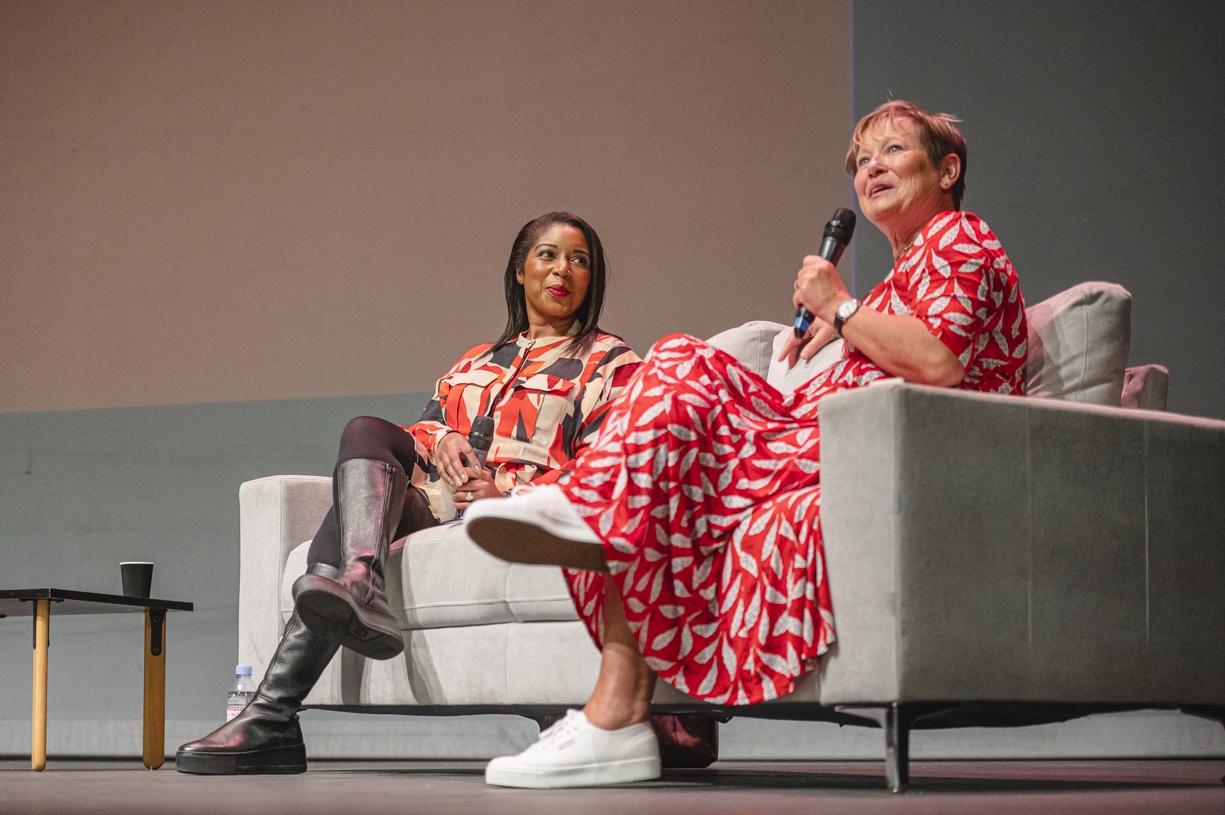
Fellow panellist, Claire Bale, Marketing Director at Nottingham High School for Girls and Diversity and Inclusion Lead at Girls Day School Trust, responded that although many industries are constantly changing and evolving, “at their core, most industries are about understanding people”, highlighting the need for more diverse workforces.
The chat wrapped up with a discussion focused on sustainability, where Susan posed the issue of the potential fear of greenwashing that some marketeers have, which can halt them engaging with sustainability. Adam Pickering, Partnerships Manager and Environment Editor for LeftLion, jumped in to explain: “It’s about not letting that fear of hypocrisy or being challenged get in the way of making a start.”
We were left with some inspiring final words from Susan Hallam on the main stage: “It may not be perfect yet, but it doesn’t mean that you shouldn’t be trying.”

